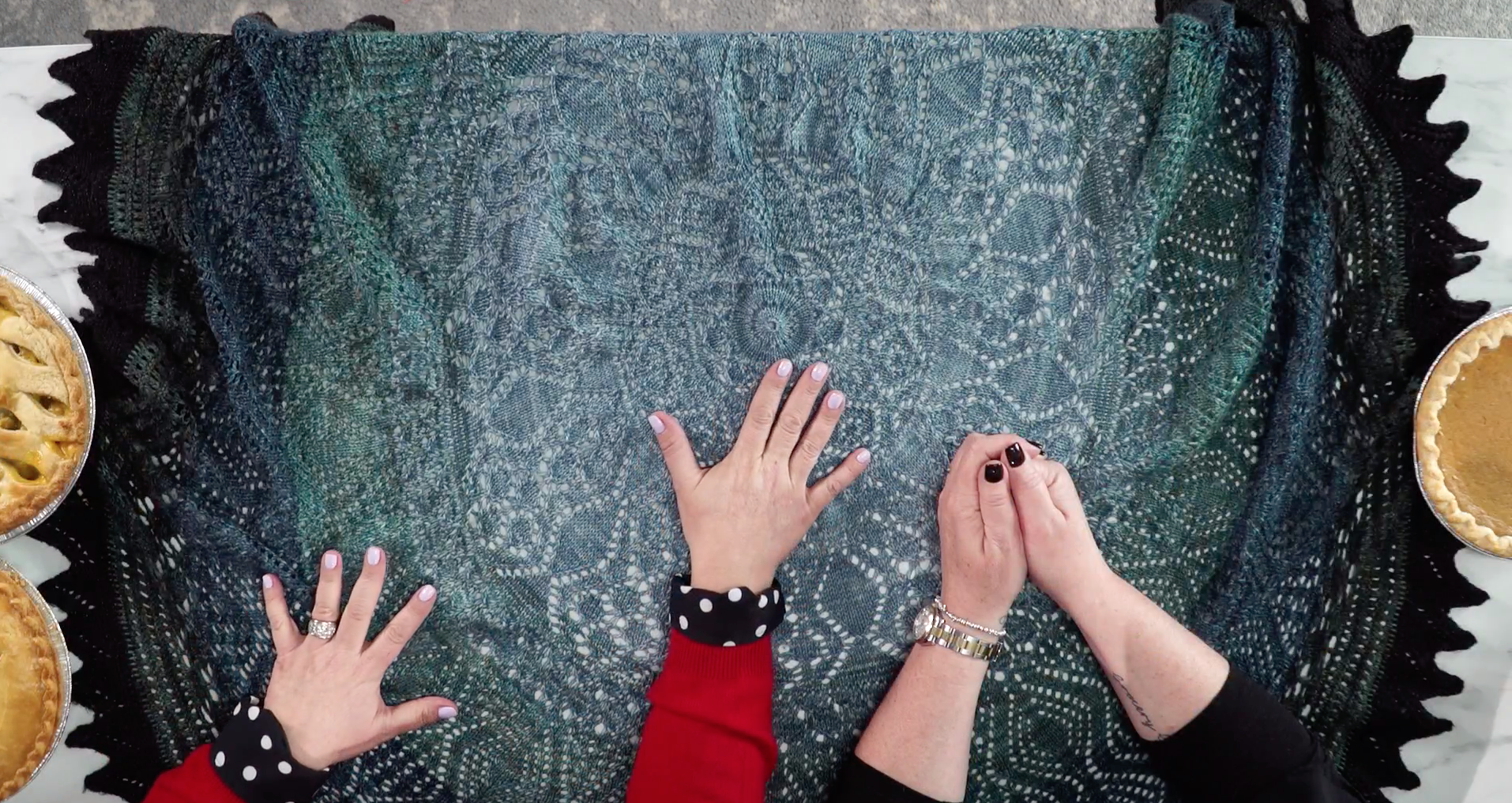
Reach way back to your middle school memories and you might remember learning about pi in math class. Though you may not have become a mathematician, you still use a lot of math when you knit — especially if you’re stitching a pi shawl.
What Is a Pi Shawl?
The pi shawl is a gorgeous example of how math and knitting are total soul mates. Created by pioneer knitter Elizabeth Zimmermann, who revolutionized knitting in the mid-1900s, the pi shawl was included in Zimmermann’s book Knitter’s Almanac and presented a whole new way to stitch a round shawl.
In math, pi represents a constant — the ratio of the circumference of a circle to its diameter. In knitting, a pi shawl is a circle-shaped shawl, but not a circular shawl. The thing that sets pi shawls apart from other circular shawls: the rate of increase (more on that later).
How Is the Pi Shawl Made?
Despite its name, the pi shawl isn’t actually based on any complicated calculations that involve 3.14. Instead, it’s based on the geometry of pi, which shows us the relationship between a circle’s radius and circumference.
When knitting circular shawls, increases are very regular and happen throughout the pattern. But pi shawls, while still worked from the center out, only require a few shaping rows in the entire project. Basically, every time you double your distance from the last increase round worked, you work another increase round. These infrequent increase rounds make pi shawls a great option for lace knitting.
Pro Tip: As you shape, keep in mind that as the diameter of the circle doubles, so does the circumference.
The Pi Shawl Formula

This formula allows for some wiggle room, but as long as you follow it closely your shawl will lie flat.
1. Determine the desired radius of your shawl.
2. Measure the round gauge of a blocked gauge swatch.
3. Multiply the radius by the round gauge to determine how many rounds to work.
Pro Tip: Keep track of your increase rounds to determine how many stitches to end with. Every time you work one, you’ll double the stitches on your needle.
Here’s an example:
1. You want to knit a pi shawl that’s 60″ across (with a 30″ radius).
2. The blocked gauge measures 4 sts and 5 rnds in 1″.
3. Rounds to work: 30″ (radius) x 5 (rnd gauge) = 150 rnds.
Good to Know: For a more in-depth look at how pi shawls come together, check out our class Knit Shawls 14 Ways: Exploring Shapes and Design.

Share tips, start a discussion or ask one of our experts or other students a question.
Already a member? Sign in
No Responses to “Knit Any Pi Shawl With This No-Fail Formula”